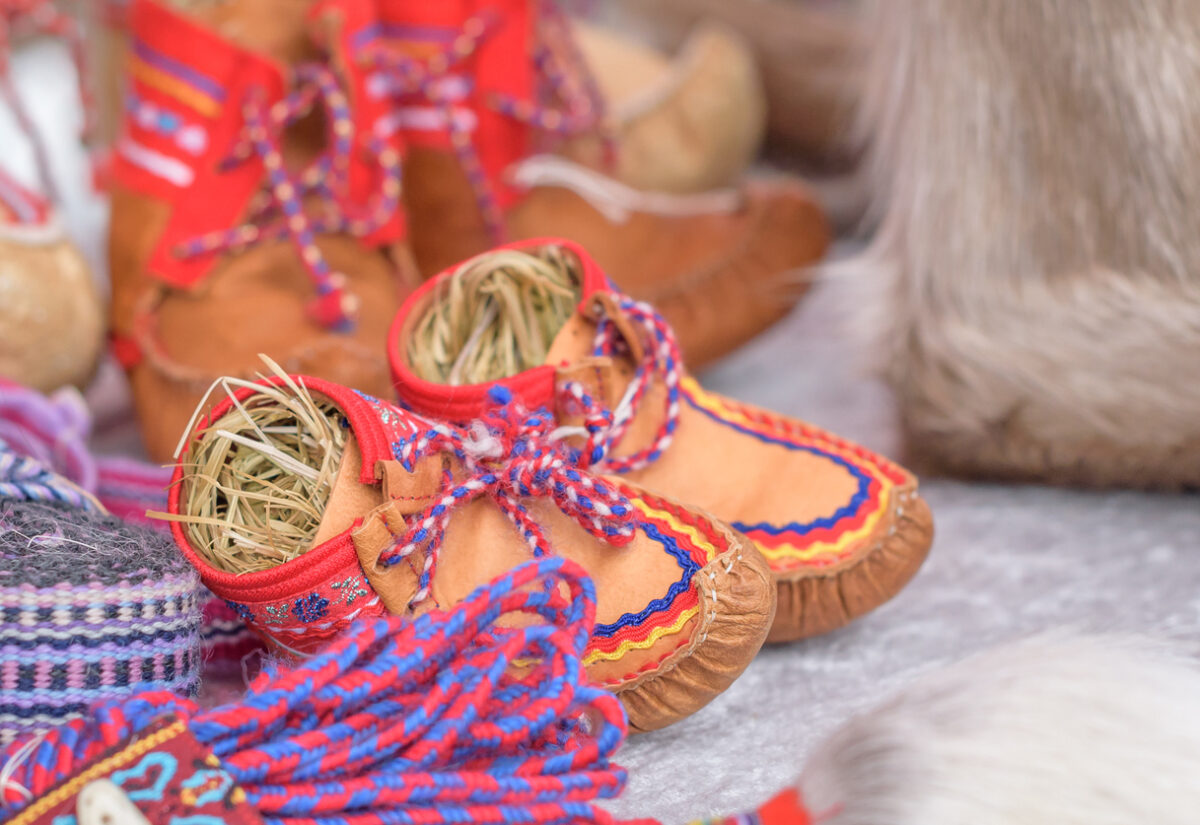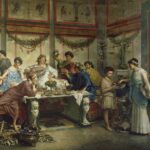 Getty Images/iStockphoto
Getty Images/iStockphotoAcross the world, Indigenous cultures have created intricate, powerful, and deeply symbolic art for thousands of years. These pieces didn’t just serve decorative purposes—they were expressions of identity, spiritual beliefs, ancestral memory, and community stories. But through colonisation, forced assimilation, religious missions, and conflict, many of these traditions came close to vanishing entirely.
Thankfully, some of these practices have seen revival thanks to community elders, cultural historians, artists, and activists who fought to preserve them. Here’s a look at several Indigenous art forms that were nearly lost forever, and the efforts that helped bring them back from the brink.
Inuit qulliq carvings and oil lamps
The qulliq is a traditional oil lamp used by Inuit people for light, warmth, and cooking, made from carved soapstone and fuelled with seal or whale oil. But the qulliq was more than just functional. It held ceremonial and symbolic value, especially among women, who tended it as a form of spiritual and domestic care.
As Western fuels and technologies replaced traditional methods, qulliq carving and usage declined sharply. However, in recent decades, the qulliq has made a resurgence in Inuit communities, especially in ceremonies and cultural education. Its revival has helped younger generations reconnect with traditional ways of life and Inuit women’s roles in community continuity.
Australian Aboriginal bark painting
For generations, Aboriginal Australians painted their stories and Dreamtime legends on bark from eucalyptus trees using natural ochres. These paintings were deeply spiritual and localised, with different symbols and colours unique to each clan or region.
Colonial suppression and the banning of cultural ceremonies led to a steep decline in bark painting. Some communities lost access to their sacred designs entirely. But from the 1970s onwards, there’s been a powerful resurgence, driven in part by artists like John Mawurndjul and institutions such as the Buku-Larrnggay Mulka Centre in Arnhem Land. Today, bark painting is not only a respected art form, but also a form of cultural reclamation.
Māori tā moko (traditional tattooing)
Tā moko is the traditional Māori tattooing method used to mark lineage, social status, and personal identity. Men wore moko on their faces and bodies, while women often had chin or lip designs. The practice was done with chisels rather than needles, making it painful but highly symbolic.
With colonisation and Christian missionary influence in the 19th century, tā moko fell out of practice and was sometimes actively discouraged or ridiculed. But since the late 20th century, there’s been a powerful revival. Contemporary Māori artists are reclaiming and modernising the practice, while still preserving its cultural roots and meanings.
Native American ledger art
Ledger art emerged in the 19th century when Plains tribes were forced onto reservations. Stripped of traditional materials like buffalo hides, Indigenous artists began drawing on ledger paper, often repurposed from government records. These drawings depicted battles, ceremonies, and daily life, using a mix of traditional pictographic styles and Western materials.
Ledger art nearly disappeared as assimilation policies took hold and formal art schools discouraged Indigenous expression. But interest has grown again in recent decades, with artists and historians re-elevating it as a vital storytelling form. Some contemporary Native artists now use ledger-style imagery to tackle modern themes, from identity to political resistance.
Ainu embroidery from Japan
The Ainu people of northern Japan and eastern Russia have a rich textile tradition, especially their embroidery styles known as “moreu” and “ayus.” These motifs weren’t just decorative—they were believed to ward off evil and protect the wearer.
Japanese assimilation policies in the late 19th and 20th centuries heavily suppressed Ainu culture, and many embroidery patterns were no longer taught. But in recent years, Ainu elders and artists have revived these traditions. Exhibitions, workshops, and cultural centres in Hokkaido are now helping preserve and pass on this distinctive form of visual storytelling.
Sámi duodji craftwork
The Sámi people of northern Scandinavia and parts of Russia have a long tradition of functional and decorative crafts, known as duodji. This includes everything from carved reindeer antler tools to intricate clothing embroidery and silverwork.
During centuries of Nordic and Russian assimilation, Sámi languages and crafts were marginalised. Duodji was often dismissed as primitive or irrelevant. But today, duodji is widely recognised as a symbol of Sámi cultural resilience. Schools, museums, and independent artisans across Norway, Sweden, and Finland are now ensuring these skills remain alive and evolving.
Haida and Tlingit totem carving
Totem poles—monumental carvings of animals, spirits, and clan symbols—are an iconic part of Indigenous culture on the Pacific Northwest coast of North America. The Haida, Tlingit, and other First Nations carved these poles to represent ancestry, history, and law.
Colonial governments and Christian missionaries suppressed the creation of totem poles in the 19th and early 20th centuries, considering them pagan or superstitious. Some were even cut down or stolen by museums. But in the 20th century, a revival began. Carvers like Bill Reid helped reignite interest and training in this form, and today, totem carving is once again taught in schools and cultural programmes throughout British Columbia and Alaska.
Batik storytelling in Indonesia
Batik, a method of dyeing cloth using wax-resist techniques, has deep roots across Indonesia. While many associate it with geometric or floral patterns, batik was also used historically to depict stories from local folklore, history, and religion.
Mass industrialisation and commercial tourism diluted many of these traditional storytelling patterns. But in places like Yogyakarta and Solo, artists and scholars have worked to recover and preserve these older narrative designs. Batik tulis (hand-drawn batik) has seen a resurgence, especially in cultural festivals and artisan markets.
These art forms survived against the odds, not because they were protected by institutions, but because communities held on.
Through memory, practice, and sheer determination, they’ve not only been preserved but are thriving again. In many cases, their revival is about more than aesthetics—it’s about cultural survival, identity, and pride. And while not every tradition can be fully restored, the effort to recover and honour them is reshaping how we understand history, heritage, and resilience.



